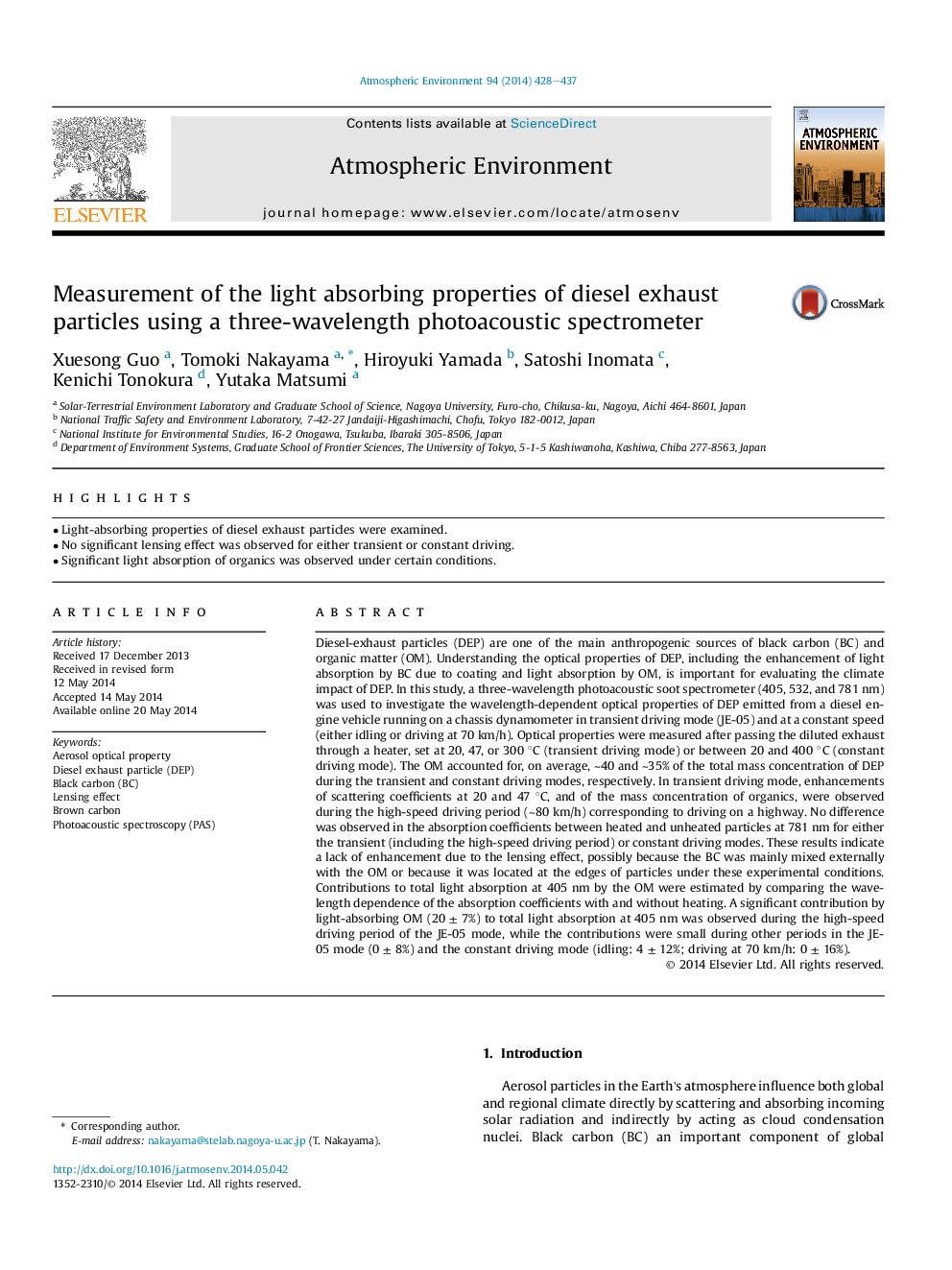| کد مقاله | کد نشریه | سال انتشار | مقاله انگلیسی | نسخه تمام متن |
|---|---|---|---|---|
| 6339620 | 1620377 | 2014 | 10 صفحه PDF | دانلود رایگان |
- Light-absorbing properties of diesel exhaust particles were examined.
- No significant lensing effect was observed for either transient or constant driving.
- Significant light absorption of organics was observed under certain conditions.
Diesel-exhaust particles (DEP) are one of the main anthropogenic sources of black carbon (BC) and organic matter (OM). Understanding the optical properties of DEP, including the enhancement of light absorption by BC due to coating and light absorption by OM, is important for evaluating the climate impact of DEP. In this study, a three-wavelength photoacoustic soot spectrometer (405, 532, and 781 nm) was used to investigate the wavelength-dependent optical properties of DEP emitted from a diesel engine vehicle running on a chassis dynamometer in transient driving mode (JE-05) and at a constant speed (either idling or driving at 70 km/h). Optical properties were measured after passing the diluted exhaust through a heater, set at 20, 47, or 300 °C (transient driving mode) or between 20 and 400 °C (constant driving mode). The OM accounted for, on average, â¼40 and â¼35% of the total mass concentration of DEP during the transient and constant driving modes, respectively. In transient driving mode, enhancements of scattering coefficients at 20 and 47 °C, and of the mass concentration of organics, were observed during the high-speed driving period (â¼80 km/h) corresponding to driving on a highway. No difference was observed in the absorption coefficients between heated and unheated particles at 781 nm for either the transient (including the high-speed driving period) or constant driving modes. These results indicate a lack of enhancement due to the lensing effect, possibly because the BC was mainly mixed externally with the OM or because it was located at the edges of particles under these experimental conditions. Contributions to total light absorption at 405 nm by the OM were estimated by comparing the wavelength dependence of the absorption coefficients with and without heating. A significant contribution by light-absorbing OM (20 ± 7%) to total light absorption at 405 nm was observed during the high-speed driving period of the JE-05 mode, while the contributions were small during other periods in the JE-05 mode (0 ± 8%) and the constant driving mode (idling: 4 ± 12%; driving at 70 km/h: 0 ± 16%).
Journal: Atmospheric Environment - Volume 94, September 2014, Pages 428-437
